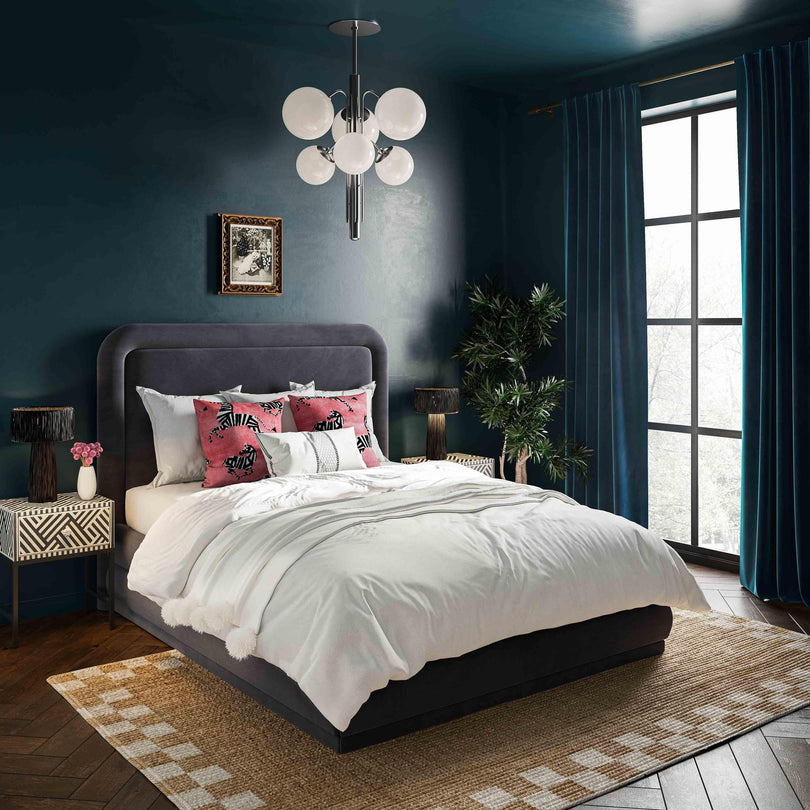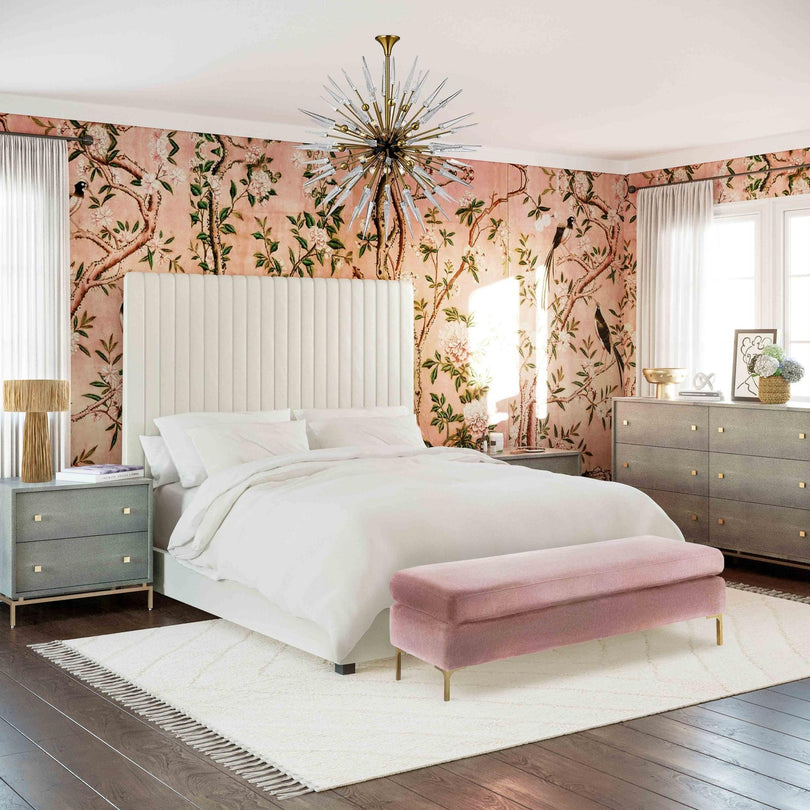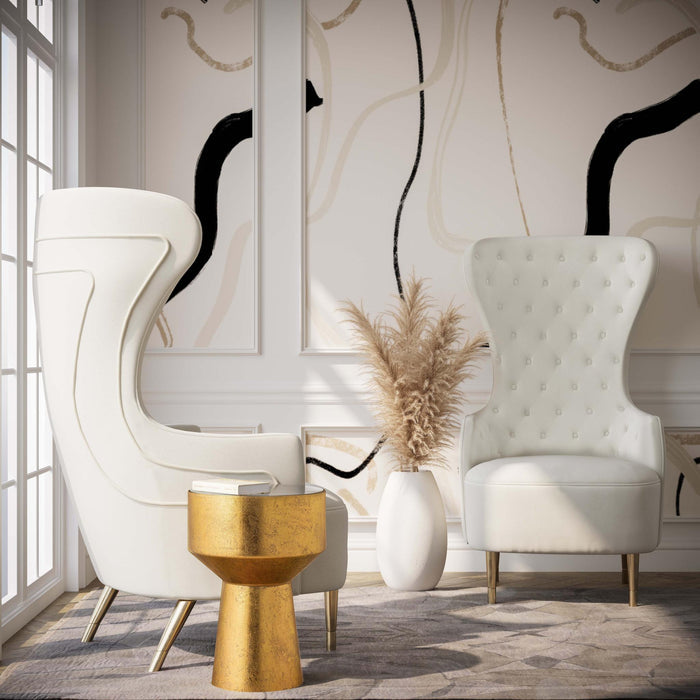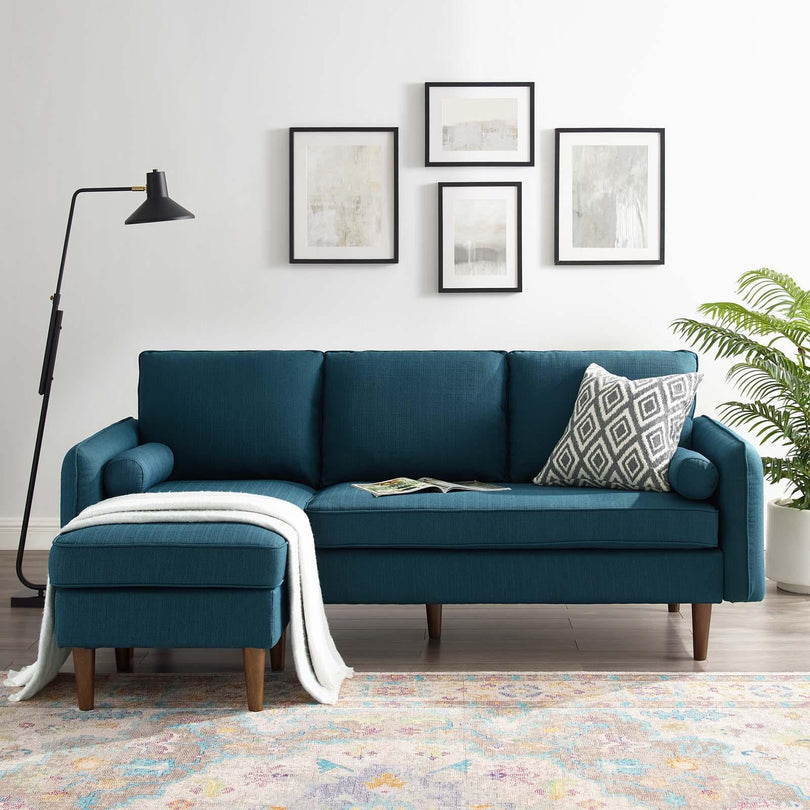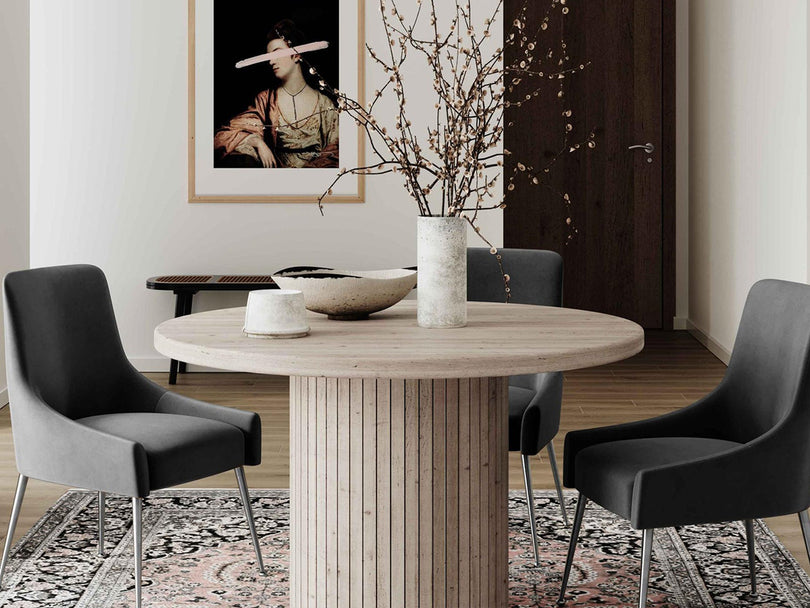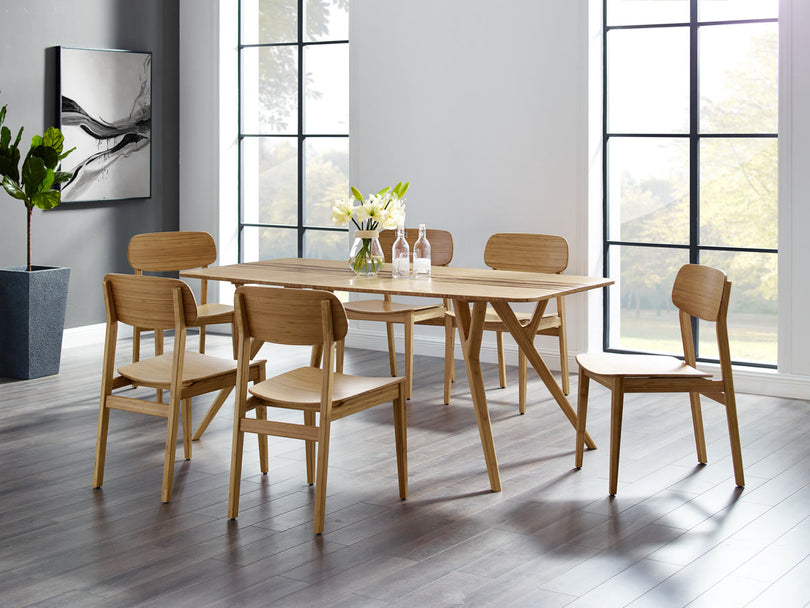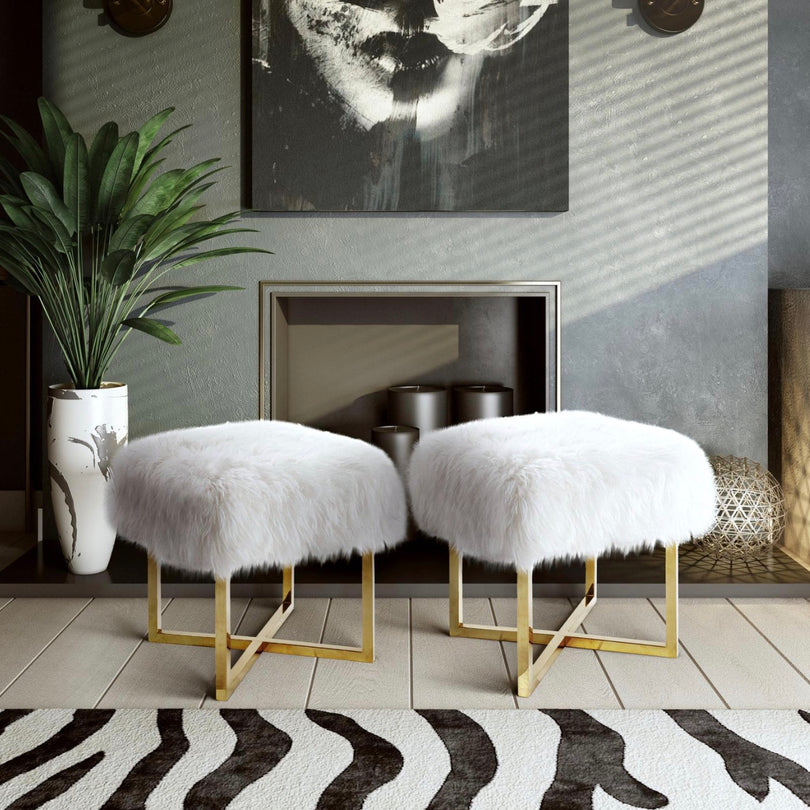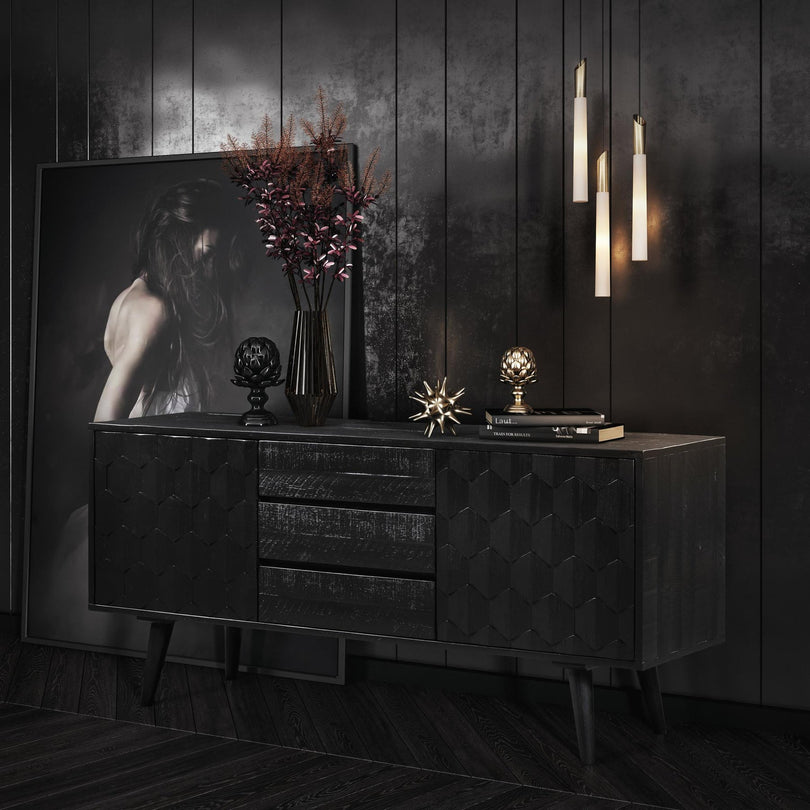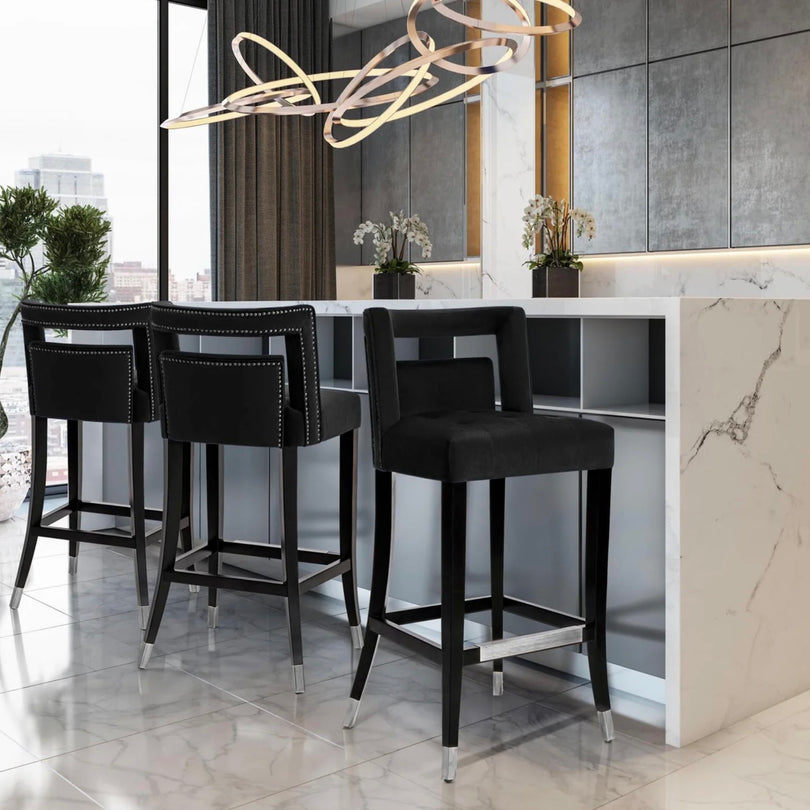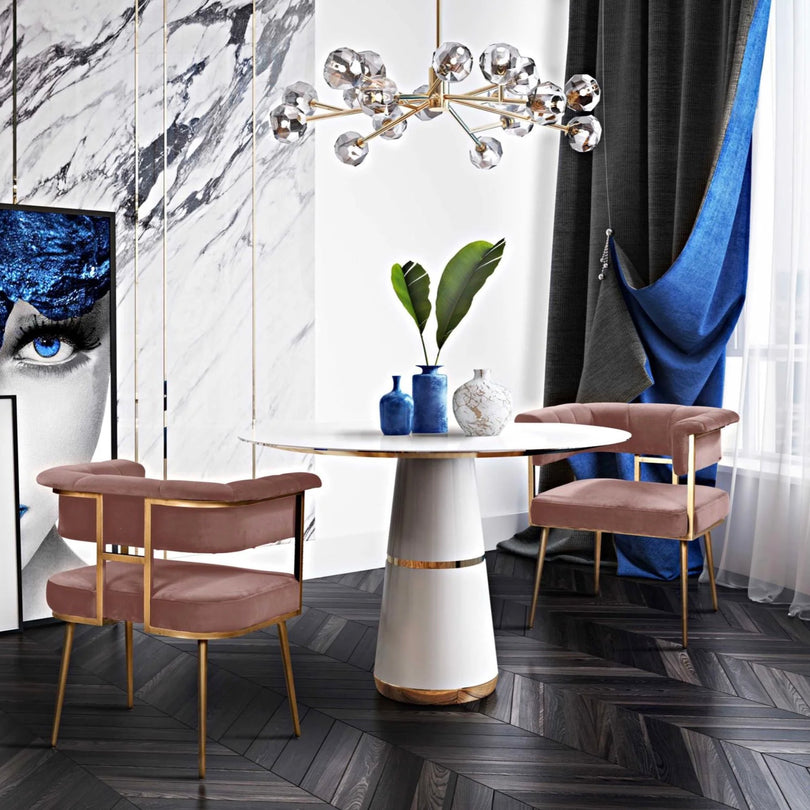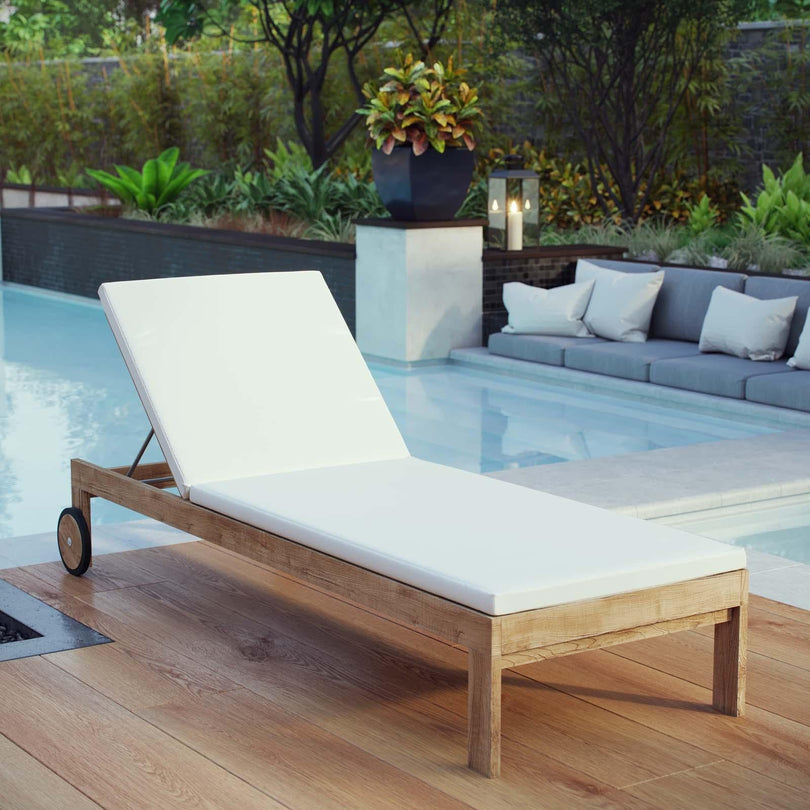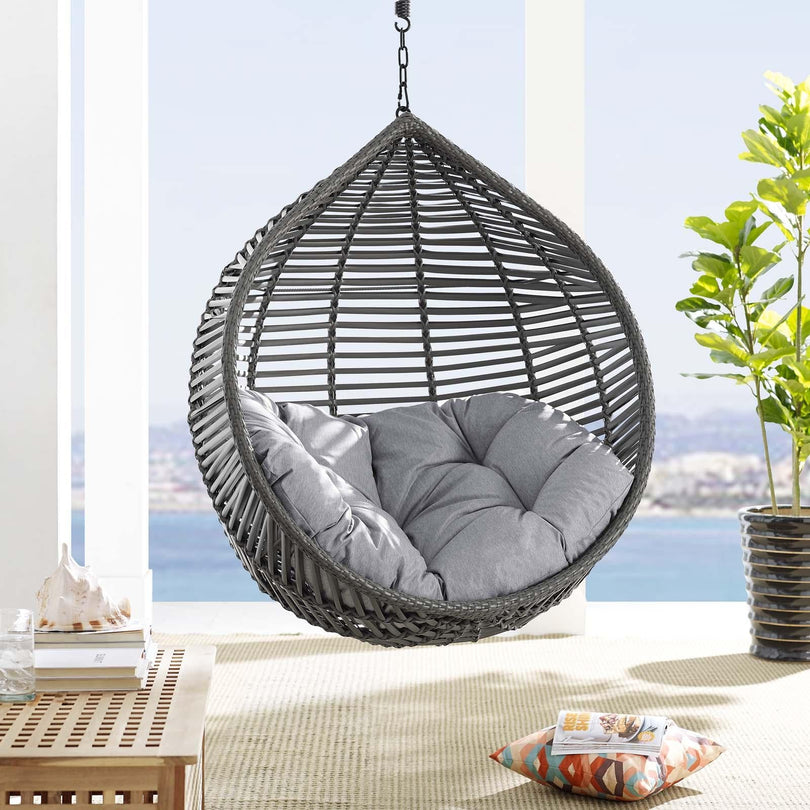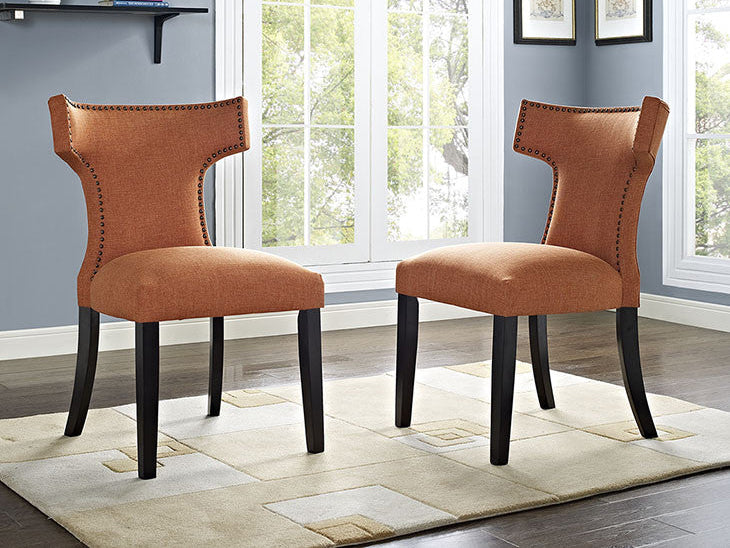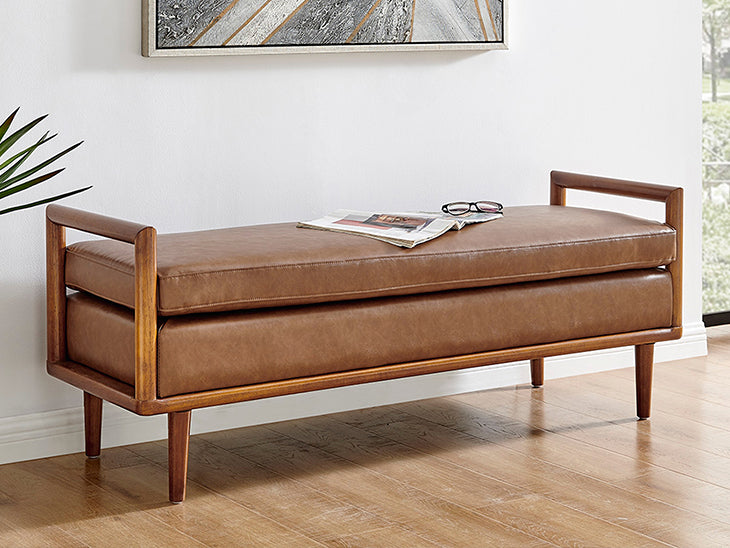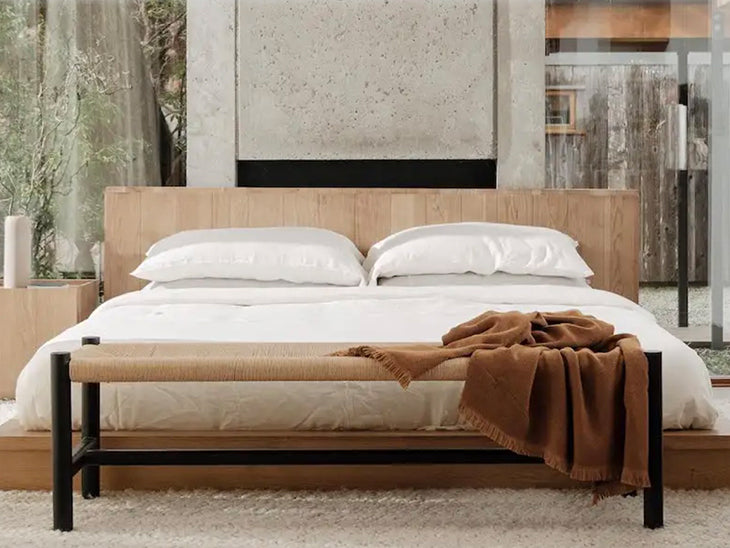How often have you found yourself overwhelmed by the plethora of furniture options available in the market? The myriad styles, colors, textures, and designs can indeed truly baffle even the most discerning shopper. Minimalist furniture, with its simplicity, functionality, and uncluttered aesthetics, can be an excellent antidote to this issue, offering a tranquil and serene atmosphere to your living spaces. This straightforward guide is designed to assist you through the process of selecting the best minimalist pieces for your home. We'll cover everything from understanding the minimalist design philosophy to tips for evaluating and caring for your furniture. Let's embark together on this journey to create a calm, balanced, and stylish home.
Basics of Minimalist Furniture
Simplicity, functionality, and elegance are some of the adjectives often used to describe minimalist furniture. But what does this really mean? Let's dive deep into the basics of minimalist furniture, understand its design philosophy, and talk about its features.
Understanding the Minimalist Design Philosophy
Minimalism in furniture design stems from the broader minimalist movement with influences from Japanese Zen philosophy. It's not just about having less. The core idea of minimalism is to strip away the superfluous and focus on the essential. It's about achieving a harmonious design with the least amount of decor and furniture.
The driving force behind minimalist furniture design is the saying, "less is more," that translates into designs with cleaner lines, simpler style, and an efficient use of space. It encourages thoughtful purchases and discourages clutter, leading to calm, serene spaces that exude tranquility and sophistication.
Key Characteristics of Minimalist Furniture
Seeking to create this reductionist aesthetic? Here are some key features to guide your choice when shopping for minimalist furniture:
- Simplicity: Minimalist furnishings exhibit a simple and streamlined aesthetic. You won't find ornate decorations here, but instead furniture with clean lines and a neutral color palette.
- Functionality: Every piece in a minimalist interior serves a purpose, with functionality taking precedence over purely decorative elements.
- Quality over Quantity: Minimalist philosophy favors quality over quantity. The idea is to invest in fewer but high-quality pieces that will stand the test of time.
- Space Efficiency: Minimalist furniture often comes with the added advantage of being space-saving, utilizing design principles that maximize utility while minimizing bulk.
- Use of Natural Materials: Many minimalist designs incorporate natural materials like timber, stone, and leather, that add warmth and texture to the otherwise neutral aesthetic.
Remember, creating a minimalist interior is not about creating a cold, stark environment. It's all about striking the perfect balance between functionality, simplicity, and warmth. It ultimately leads to a relaxing living space defined by well-considered furniture and a serene ambiance. Take time to carefully select each piece, keep things organized and uncluttered, and let the minimalist philosophy guide you. It's not just a design trend; it's a way of life.
Principles for Choosing Minimalist Furniture
The essence of a minimalist home lies in the furniture that it houses. With a focus on function and simplicity, minimalist furniture helps create a space that is both calming and stylish. Whether you're a minimalist at heart or want to infuse minimalist qualities into your current decor, these principles can guide you in choosing the right minimalist furniture.
Functionality Before Form
Opting for minimalist furniture involves focusing on use over aesthetic appeal. Consider each item’s purpose, and ensure it earns its place in your home. Sure, it's easy to get swayed by beautiful pieces, but remember, for a minimalist, functionality should always come before form.
- A couch that doubles up as a pull-out bed
- Coffee tables with hidden storage compartments
- Shelves that can be adjusted to fit different sized items
These are examples of minimalist furniture that perfectly blend functionality with form.
Quality Over Quantity
Minimizing doesn't mean compromising on quality. In fact, with fewer pieces in the room, each item garners more attention, making it essential that every piece is a clear representation of superior workmanship and durability.
- Buy from trusted brands that offer warranties
- Seek customer reviews online
- Invest in timelessly elegant pieces
When it comes to minimalist furniture, it's always about quality over quantity.
Harmony of Colors
For a minimalist, the color palette is understated and harmonious. Predominantly, shades of white, gray, and beige are used, interspersed with soft shades of blue or earthy tones to create a serene atmosphere. In such a scenario, the furniture should blend seamlessly into the decor, either matching or contrasting subtly.
Choice of Material
The choice of material is critical in minimalist furniture. Anything too loud or elaborate goes against its ethos. Instead, emphasis is placed on using natural materials like wood and stone, or sleek metals like stainless steel and iron. These materials give a sense of honesty and simplicity that is central to minimalist design.
Space Economy
Minimalist furniture embraces the principle of "less is more". This extends to how much space the furniture takes up in the home. Opt for furniture that economizes space, with smart design enabling multiple uses without the piece becoming bulky.
By following these principles, you can ensure you’re well on your way to creating a home decor that resonates strongly with a minimalist aesthetic. The blend of functionality, quality, harmony of colors, choice of material, and space economy are the fundamental pillars of selecting minimalist furniture, lending your home an appeal of understated elegance.
How to Evaluate Minimalist Furniture
Minimalism is a term that has rapidly taken the design world by storm. The sleek lines, subdued color schemes, and functional-first approach have made minimalism the go-to design option for many individuals seeking a fresh perspective in their surrounding spaces. Arguably the most crucial aspect of adopting this aesthetic lies in choosing the right minimalist furniture. Making the right choice is crucial, yet tricky. Here's how you can evaluate minimalist furniture effectively.
Check for Sturdiness
Every piece of furniture you purchase should pass the durability test. Always remember the robustness of a product is equally essential as the visual appeal in minimalism.
- Inspect the Framework: Look for a solid yet lightweight framework. Metals like aluminum, steel, or a good quality wood always sound trustworthy.
- Check the Joinery: Furniture that uses screws, dowels, and even wooden joinery typically lasts longer.
- Conduct a Sit Test: With any piece of furniture, especially seating, putting it through a simple sit test can reveal a lot about its sturdiness.
Observe the Finishing
The finishing touches say a lot about the quality of minimalist furniture. Uneven spots, messy stitch lines or varnishing clinging to the sides, are an instant red flag.
- Check for Evenness: The furniture should appear smooth and even, with no visible uneven surfaces or color variations.
- Quality of Fabric: Minimalist furniture often carries neutral tones. Check the quality of the fabric used for any signs of cheap manufacturing.
- Smoothness of Edges: The furniture edges should be smooth and free from any rough spots.
Consider the Proportions
Minimalist furniture should blend seamlessly into your space.
- Understand the Room Layout: Measure your room to ensure the furniture fits well and does not overwhelm the space.
- Balance: Ensure that your furniture is proportionate to other items in the room. The furniture size should correlate with the room size for a truly minimalist appeal.
Assess the Comfort Level
Functionality is a key aspect of minimalist design. It’s not enough for a piece of furniture to look good; it must also be comfortable and practical.
- Comfort Test: Sit, lie-down, or even lounge for a while to check the comfort level of the furniture.
- Practicality: Does the furniture serve its intended purpose well? A sleek chair that's unbearable to sit on or a stylish table that wobbles doesn't fit into the minimalist ethos.
Thoroughly evaluating minimalist furniture can seem like a daunting task, especially when you're trying to balance aesthetic appeal with functionality. But with these strategies, you can make sure you're selecting pieces that are not only beautiful but will stand the test of time and daily use. Hence, let these points guide you towards making the right choice in your minimalist furniture shopping journey.
Where to Shop for Minimalist Furniture
Minimalist furniture, with its clean lines and understated elegance, is quite en vogue these days. It's an inescapable fact: less truly can be more. Whether you're reimagining a room entirely or just hunting for that one perfect piece to complete your space, figuring out where to go shopping can be daunting. But worry no more! In this section, we'll guide you through the avenues worth considering when looking for minimalist furniture.
Physical Stores vs. Online Retailers
Shopping for furniture is a unique experience, often invoking a sense of 'feeling'. Some people desire to physically touch and see the furniture before deciding. For them, shopping at brick-and-mortar stores gives them an opportunity to appreciate the quality of materials and assess the comfort. Large retailers, design boutiques, and even department stores are some great options that usually offer minimalist designs.
On the other hand, the digital age offers an endless world of online possibilities at the click of a button. Numerous online retailers such as Wayfair, Article, and West Elm curate an extensive range of minimalist furniture. Online shopping allows you to compare prices from different stores at your own pace. Plus, you can read product reviews before making a purchase - a luxury unseen in most brick-and-mortar stores.
Considering Second-Hand Options
Looking beyond the conventional realm of new, shiny furniture, second-hand options hold great potential too. Vintage pieces often encompass minimalist details, just waiting to be discovered at a thrift store, or an estate sale. Besides, it's kinder to your pocket and the planet as well - by giving these pieces a home, you'll be promoting sustainability.
Sites like Facebook Marketplace, Craigslist or your local used goods store can serve as excellent sources for second-hand minimalist furniture purchases. Bear in mind, it's essential to check the condition of second-hand furniture before committing.
Local Craft vs. Manufactured Pieces
Despite the flurry of mass-produced furniture that modern times offer, there's still a charm to hand-crafted, locally made pieces. These often tell a story of skill, tradition, and craft that factory-produced items can't provide. Not to mention, you'll be supporting local artisans, upholding traditions, and promoting local economies.
Minimalist furniture crafted by local artisans is typically unique and well-made. Nevertheless, larger manufactures have stringent quality-control checks that ensure reliable and consistent products. Consider your preference for uniqueness, budget, and quality control when deciding between the two.
As you navigate your journey to find minimalist furniture that suits your style and needs, remember, it's all about balancing aesthetics, functionality, cost, and sustainability. May your rooms be ever stylish and uncluttered. Happy hunting!
Taking Care of Minimalist Furniture
Minimalist furniture, with its clean lines and simplicity, can add an air of sophistication and elegance to your living space. But, keeping minimalist furniture looking its best requires some thoughtful care and attention. This guide will supply you with pointers and tips on how to maintain the pristine look and feel of your minimalist pieces.
Regular Cleaning Regimen
One significant factor in caring for minimalist furniture is adhering to a regular cleaning routine. A predictable schedule can ensure your furniture stays dust and stain-free and always ready to impress.
- Daily dusting: Utilize a soft feather duster or microfiber cloth. This regular dusting helps to prevent particle buildup which can ultimately damage the furniture’s surface.
- Weekly mopping or wiping: The type of cleaning depends on the material of your furniture. Wood furniture would benefit from a dry dust mop, while metal or glass would do well with a damp cloth.
- Monthly polishing: For wooden minimalist furniture, regular polishing can help to maintain its shine. Always pick a polish that suits the type of wood your furniture is made from.
Preventing Furniture Damage
Preventing potential damage is just as important as cleaning when it comes to maintaining your minimalist furniture. There are numerous ways to keep your pieces protected and looking as good as new.
- Avoid direct sunlight: Sunlight can cause discoloration and damage to your furniture, especially if it's made of wood or fabric. Keeping your furniture away from windows or using curtains during peak sunlight hours can help.
- Use coasters and placemats: Protect your furniture from moisture and heat damage by using coasters for drinks and placemats for hot dishes.
- Proper handling: Always lift furniture when moving it instead of dragging it. This prevents scratches and damage to both the furniture and your floor.
Maintaining the Quality
Minimalist furniture is designed for both function and aesthetics. Maintaining its quality means ensuring the durability and longevity of the piece.
- Patch up any minor damages: Small scratches or chips may seem insignificant, but they can lead to more considerable damage over time. It’s always wise to address any issues as soon as you notice them.
- Regular inspections: Conduct your furniture inspections regularly to catch any problems early enough before they escalate to irreparable levels.
- Avoid overloading: Although minimalist furniture is built to be sturdy, it’s important not to overload them to avoid unnecessary stress and potential damage.
With these tips, you'll not only keep your minimalist furniture looking spotless and chic but also ensure it serves you for many years to come. Minimalist furniture is an investment in style and functionality, and its upkeep should reflect that value.
Conclusion
Embracing a minimalist approach to your interior design can be a game-changer in fostering elegance and peaceful resonance in your living spaces. Maintaining the principles of functionality, quality, harmony, material choice, and space economy will guide you towards investing in the right pieces. Remember, evaluating your furniture for sturdiness, finishing, proportions, and comfort will play a significant role in adding value to your home.
And the best part? Accessing high-quality minimalist furniture has never been easier. With options including both online retailers and physical stores, as well as new and second-hand pieces, you can select what best fits your taste and budget. Place importance on taking care of your minimalist furniture too, as a strict cleaning regimen, preventing damage and maintaining quality will ensure its longevity.
Just remember that at its essence, minimalism is about simplicity and focus. Each piece you introduce into your space should add value and work harmoniously within your overall aesthetic. Whether you're a seasoned minimalist enthusiast or just getting started, Minimal & Modern offers a myriad of options to redefine your space beautifully. Here's to creating spaces that are as inspiring as they are cozy.
Frequently Asked Questions
-
What factors should I consider when choosing furniture?
When choosing furniture, consider factors such as quality, comfort, size, style, and price. Additionally, think about the functionality and durability of the pieces.
-
How do I determine the right size of furniture for my space?
Measure the dimensions of your space and consider the layout and flow of the room. Ensure that the furniture you choose fits in the available space without overcrowding or hindering movement.
-
What are some popular furniture styles to consider?
Some popular furniture styles include modern, contemporary, traditional, industrial, and mid-century modern. Explore different aesthetics and choose a style that resonates with your preferences and complements your existing decor.
-
What materials are commonly used in furniture construction?
Common materials used in furniture construction include wood, such as hardwood and softwood, metal, glass, leather, fabric, and synthetic materials. Each material has its own characteristics and level of durability.
-
How can I ensure I'm getting good quality furniture?
To ensure you're getting good quality furniture, inspect the construction, materials, and finishes. Look for solid joinery, sturdy frames, and well-made upholstery. Additionally, read reviews and consider brands or retailers known for their quality craftsmanship.

